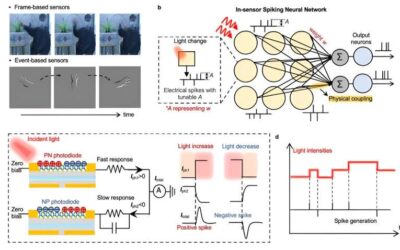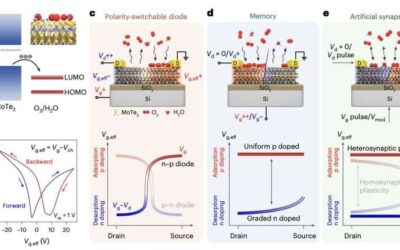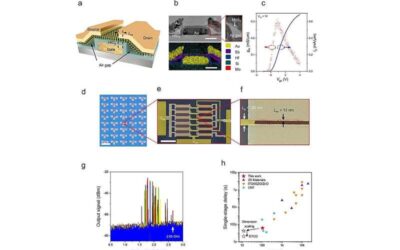Neuromorphic vision sensors are unique sensing devices that automatically respond to environmental changes, such as a different brightness in their surrounding environment. These sensors mimic the functioning of the human nervous system, artificially replicating the...
Electronics & Semiconductors
An approach to realize Potts annealing using single-photon avalanche diodes
Massively parallel annealing processors, where the computing nodes on a single processor can simultaneously perform a series of coordinated operations, could have a huge potential for tackling complex sampling and optimization problems. Electronics engineers and...
Reconfigurable molybdenum ditelluride devices with multiple functions
Over the past decades, electronics engineers have been trying to develop increasingly smaller and highly performing field effect transistors (FETs) with multiple functions. FETs are crucial components of most electronics on the market today, which can control the...
Integrated circuits based on a 2D semiconductor operating at GHz frequencies
Transistors are crucial electronic components that regulate, amplify and control the flow of current inside most existing devices. In recent years, electronics engineers have been trying to identify materials and design strategies that could help to further improve...
A machine learning–based tool to model phase-change memory materials
Computer simulations can greatly contribute to the study of new promising materials for technological applications. These include so-called phase-change materials (PCMs), substances that release or absorb thermal energy while melting and solidifying, which are...
Researchers demonstrate field-free switching of a commercial PMA ferromagnet at room temperature
Magnetic random-access memories (MRAMs) are data storage devices that store digital data within nanomagnets, representing it in binary code (i.e., as "0" or "1"). The magnetization of nanomagnets inside these memory devices can be directed upward or downward.
An energy efficient transmitter based on a CMOS chip and silicon photonics
The widespread use of electronic devices to interact with others and access the internet has increased the need for highly performing communication technologies that can transmit data faster and more efficiently. Increasing the data transmission rate of devices...
A new reconfigurable field-effect transistor and memory device based on a 2D heterostructure
Transistors are crucial components of most electronics on the market today, including computers, smartphones, wearables and numerous other devices. These components, generally based on semiconducting materials, are designed to switch, detect and amplify current inside...
An adhesive and stretchable epicardial patch to precisely monitor the heart’s activity
Epicardial patches are carefully engineered tissue patches that can be placed near or on a patient's heart. These devices can help doctors to diagnose and treat a variety of heart conditions, including arrhythmia and heart attacks (i.e., myocardial infarctions).
The brain gets its own broadband: Electro-quasistatic fields enable broadband communication for brain implants
In recent years, engineers have been working to develop increasingly sophisticated devices that can help humans to interact better with computers. These technologies, including brain-machine interfaces, electroceuticals and wearable health care devices, could...










